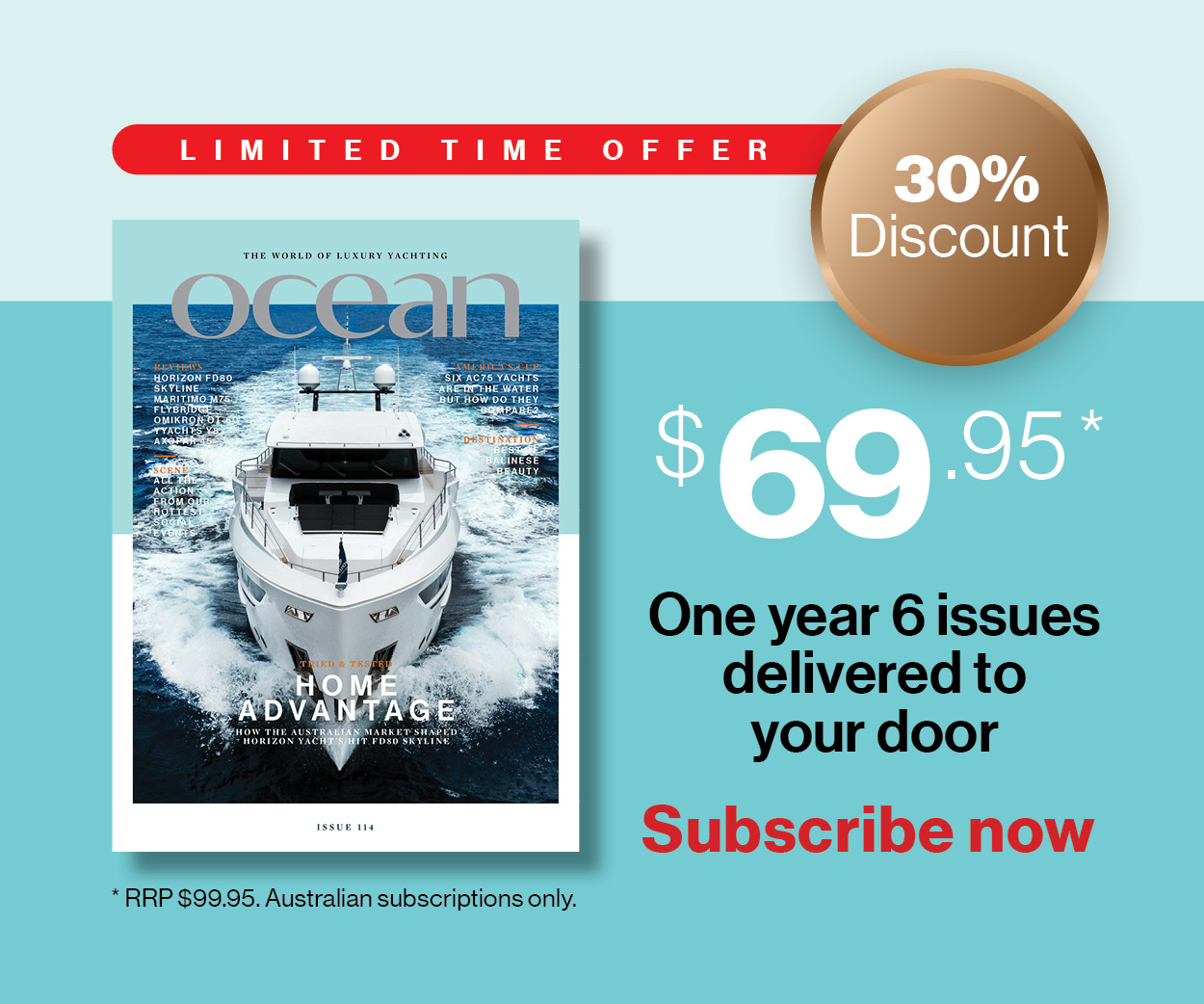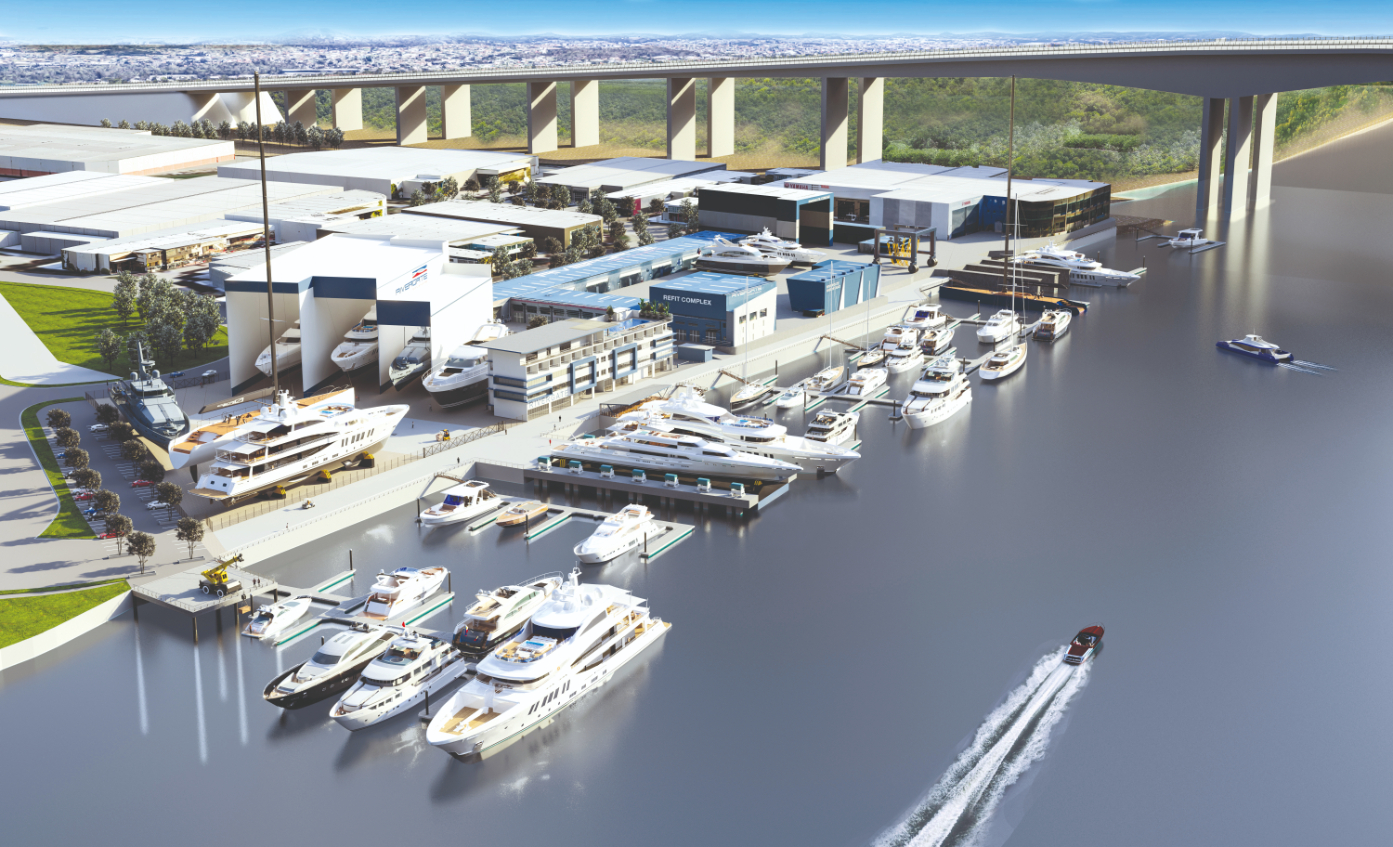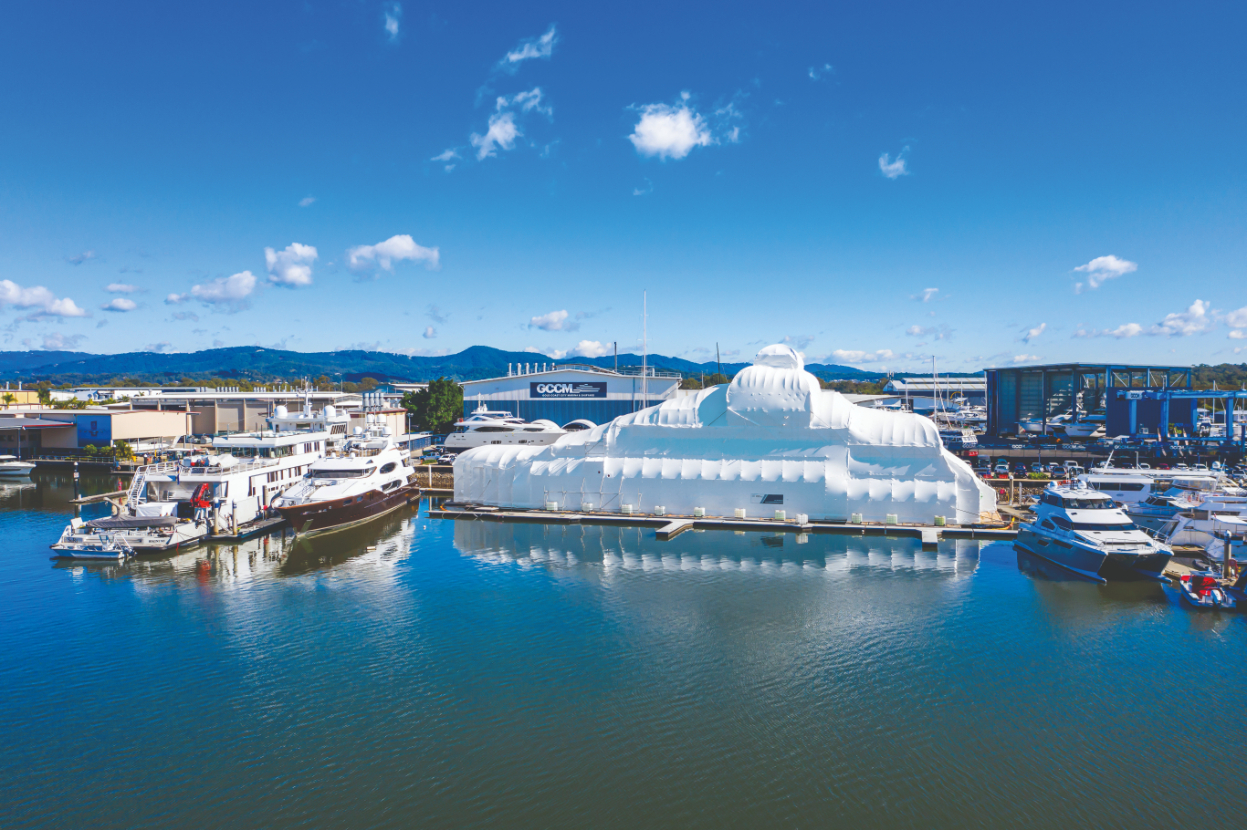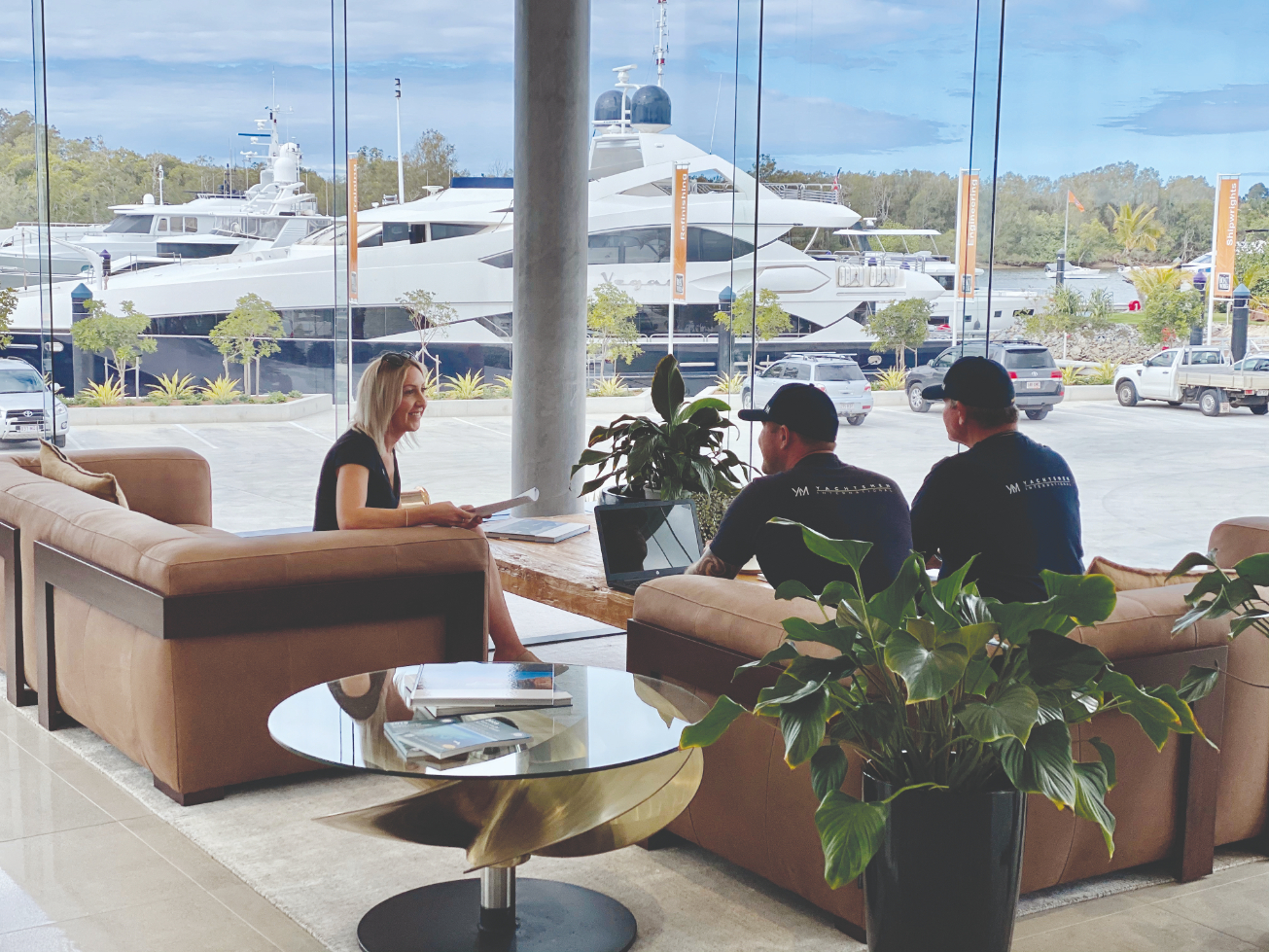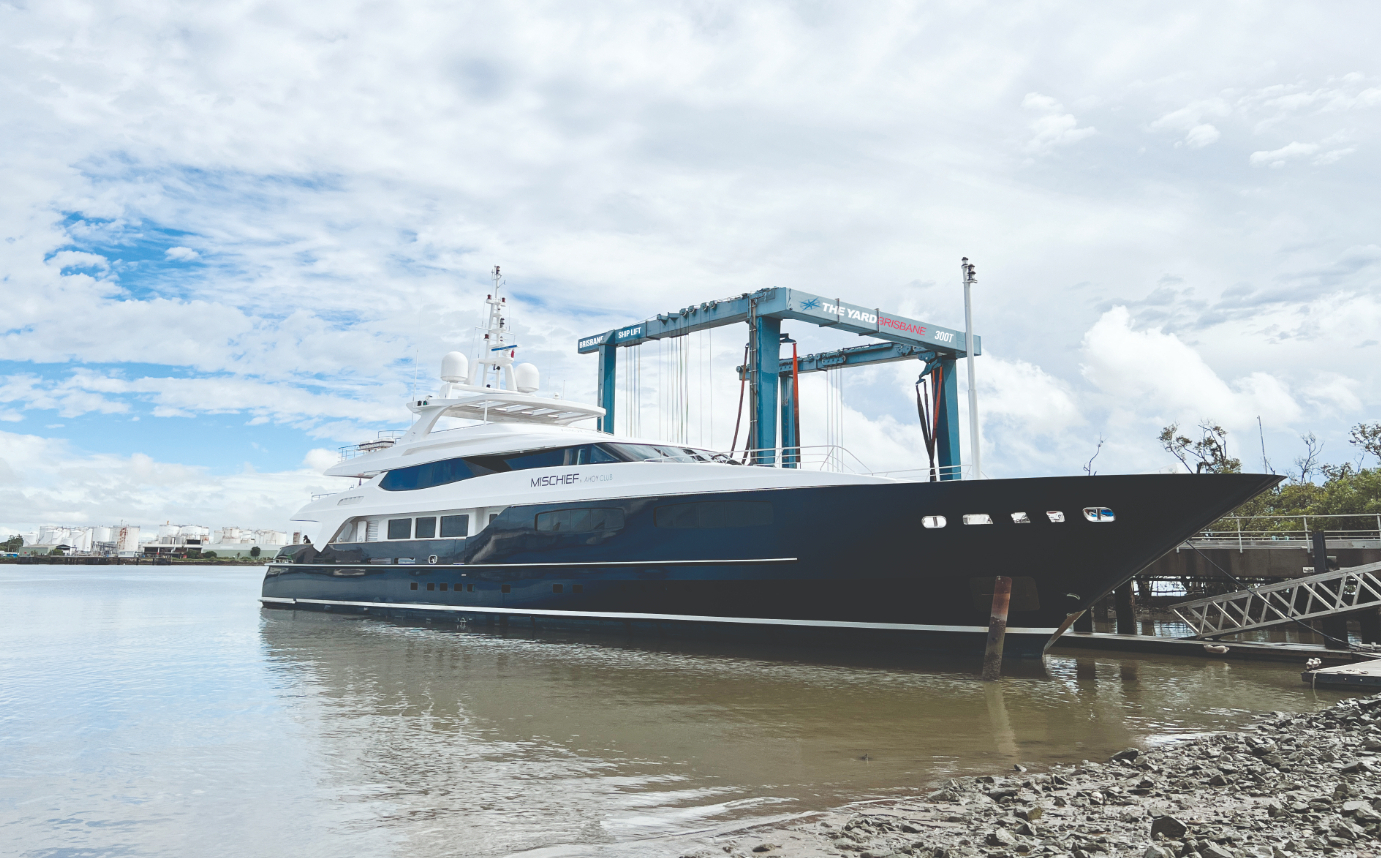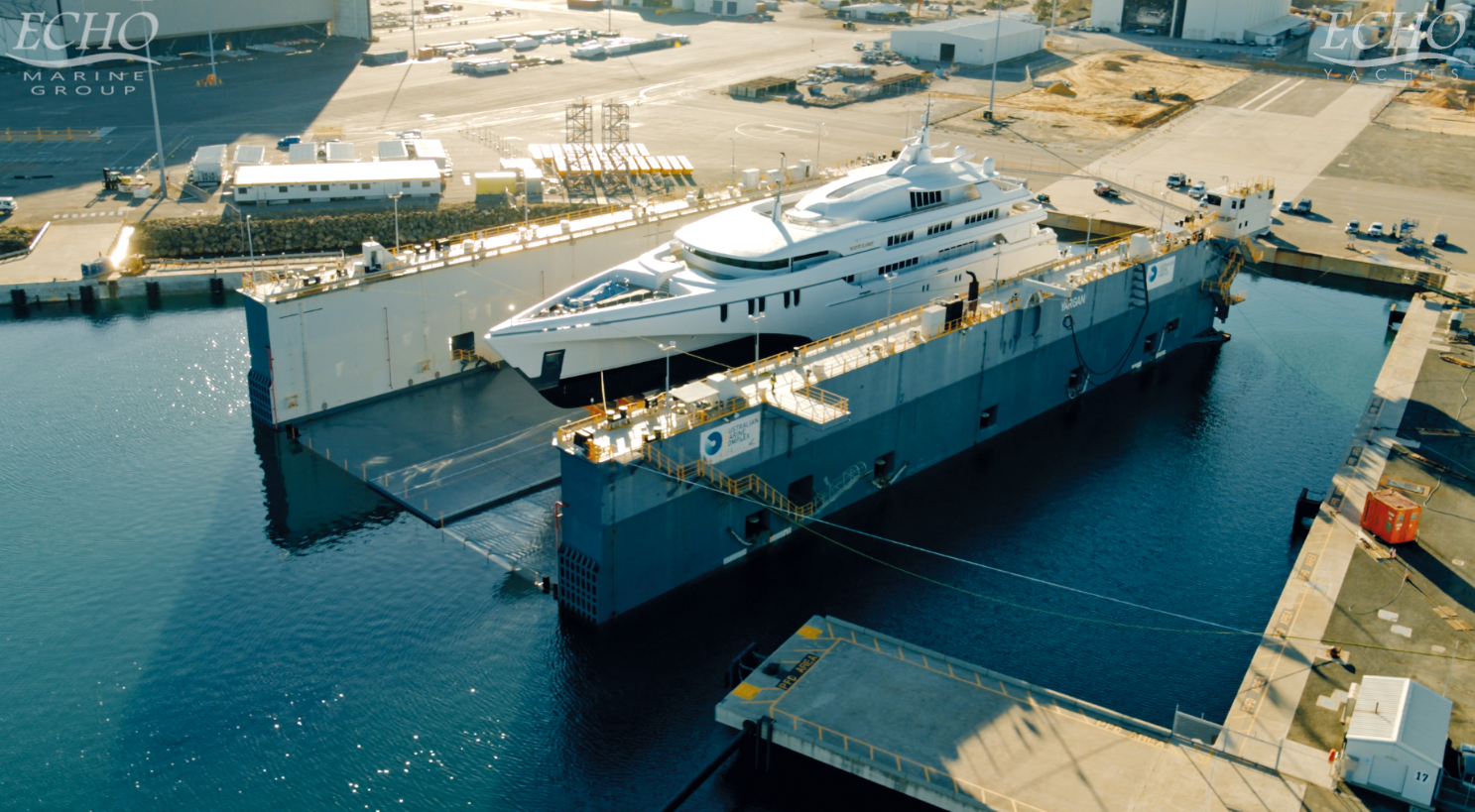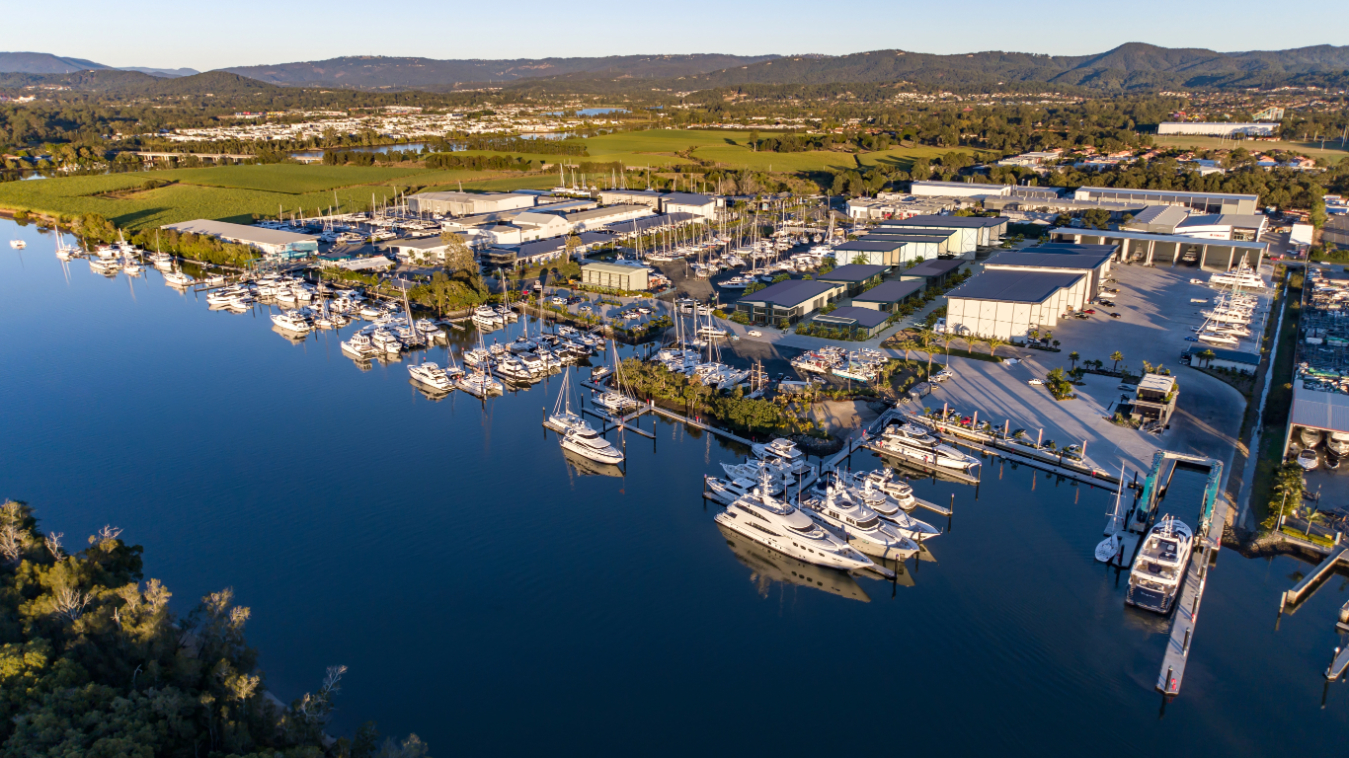Future fit
Having taken lessons from their Northern Hemisphere counterparts, the shipyards of Australasia are creating world-class superyacht precincts that stand to be the envy of the world.
Written by Jo Morgan
07 July 2022
Part One: Australia
When I moved back to Australia from France several years ago, the sight of a 70-metre yacht at Rivergate Shipyard under Brisbane’s Gateway Bridge hit me with an oddly jarring jolt of recognition – what on earth was that doing there? I was aware that in the 20-odd years I’d been away, shipyard infrastructure had grown in Australia, but the degree of change still startled me.
I also realised New Zealand had an established reputation for superyacht refits stretching back to the 1980s, with multiple infrastructure booms around subsequent America’s Cup challenges.
Even so, there was no doubt that for me, at least, Australia’s extraordinary refit revolution over the past two decades had somehow flown under the radar.
I was sure I wasn’t alone in underestimating this phenomenal growth, though. The superyacht fleet is still considerably Northern-Hemisphere-centric, and perceptions often take time to shift.
Chris Blackwell of Western Australia’s Echo Yachts confirms the change is still a work in progress. “I’ve been involved in the shipbuilding industry for over 23 years,” he says.
“During that time, I’ve come to see how well Australia performs globally in terms of innovation, ingenuity, quality and can-do attitude.
“And yet, of the 6,000-plus international superyacht owners and their captains sailing the globe, Australia is yet to be truly appreciated by the majority of them for the very low risk and very high standard of new build, refit and maintenance projects we can deliver.”
Times are a-changin’
With Australia standing on its own merit as a world-class superyacht refit destination, it’s time for perceptions to catch up.
In 2017, Boat International voted Rivergate Marina and Shipyard, which only opened in 2006, one of the top three superyacht refit yards in the world. Now, with major expansion plans in the works, they plan to make the facility the largest superyacht hub in the Southern Hemisphere.
On the Gold Coast, The Boat Works has opened its stunning AU$150- million, 25-acre superyacht refit facility complete with a 300-tonne travelift, 14 refit sheds up to 50 metres, a superyacht crew training facility and a host of on-site trades. The facility also has multiple cafes, a rather swanky Captains’ Lounge and a classic car museum.
And the change just keeps coming, with a dizzying amount of further expansion on the books.
Gold Coast City Marina & Shipyard (GCCM) is now in its Stage II development – an enormous 50-acre superyacht facility that will include a 1,200-tonne hydraulic trailer, resort-style crew accommodation, superyacht crew training facility, helipad and a range of refit sheds, trades, factories, agencies and workshops.
In Brisbane, The Yard, where its 600-tonne lift already services 25 superyachts a year, expansion plans include a heavy lift wharf and floating docks for an additional 430 metres of superyachts for in-water work.
And, for the very big superyachts, at 2,500 tonnes Austal offers the largest lift capacity in Queensland, plus an additional yard in Cairns.
South-east Queensland has most definitely emerged as the superyacht hub of Australia, but healthy competition for the refit dollar has also risen on the other side of the country in Western Australia.
In 2015, WA’s Echo Yachts, the shipyard that built the award-winning 88-metre White Rabbit, saw the potential and expanded into the refit space, utilising its 12,000-tonne, 8,000-tonne and 800-tonne lift capacity and 100-metre enclosed refit shed.
Meanwhile, Silver Yachts, another world-class yacht builder in Western Australia, is planning an expansion into refits as well.
With such fervent activity, the question is, what is fueling this extraordinary growth phase? Is the shipyard sector booming largely due to an increase in visiting foreign-flagged yachts, a boom in local yacht ownership, or the anticipation of a boom to come?
All three was the answer from the shipyards I spoke to. According to SuperyachtNews, more yachts are visiting the Southern Hemisphere. With an average growth of 12 percent between 2015 and 2020, 27 percent of all visiting superyachts stopped on Australia’s east coast.
Visits are getting longer, too, with the growing infrastructure encouraging yachts to be based here longer and to get major work done in Australian shipyards. COVID has affected foreign yacht numbers in interesting ways, but we’ll get to that in a moment.
As Julie Cook, CEO of The Yard in Brisbane, explains, “There are several macro influences that have aided a resurgence in the Australian superyacht industry of late.
“Exchange rates have been favourable for large projects using GBP, Euro and USD. When combined with legislative changes, the economic climate has been easier to navigate for international superyachts.”
There are other reasons yacht owners and captains may be choosing Australia for significant works, too. As Steve Fisher, International Director of Business at Rivergate, explains, “The fleet has learned that while cheap, Asia does not provide the quality that superyacht owners demand. As one captain said to me, ‘It’s not cheap if it takes longer and has to be redone.’
“Superyacht captains regularly share information about their experiences – both good and bad – and they know that quality, cost-effective service is available in Australia.
“They are also attracted by the reality that Australia is politically stable and corruption is not part of the Australian way of doing business.
“In addition, international vessels undergoing maintenance in Australia are not charged GST or duty, and this tax-free status is very attractive to visiting yachts.”
In short, foreign-flagged superyachts are no longer just coming into an Australian yard for the bare minimum of work while cruising the region – they are seeing the quality that can be achieved and getting major works done.
Some are even coming to Australia purely for the refit. As Trenton Gay of GCCM explains, “We had a yacht travel 3,000 nautical miles to do a refit then turn right around and go back. You know you must be doing something right.”
Several shipyards also mentioned the crew factor – there are so many Australian captains and crew in the industry encouraging their yacht owners to visit.
“A large percentage of crew are from these regions,” confirms Brian Keller, Business Development Manager at Austal, “and if we can offer value for money, and if owners of chartering vessels can get some return while in the region, then it makes it feasible for them.”
But I’d argue there’s another factor at play in Australia’s ascension as a refit destination. While it may seem counterintuitive, the Australian yachting industry’s relative newness is also proving to be an advantage.
Shipyards here have been able to look at the long-established yards overseas and adapt accordingly. They can also position themselves for future expansion, unlike the Mediterranean shipyards, where there is little waterfront land left to expand into.
One way that stands out is that Australian refit yards have set themselves up as a marine precinct, with trades and supporting businesses on site – a model Gay tells me was spearheaded in the early days by GCCM.
And it’s a great model. Any crew member who has spent a frosty winter’s morning waiting at a Mediterranean shipyard gate for contractors to arrive, get signed in, conduct safety briefings and then coordinate with other contractors and the project manager (often while speaking different languages) will agree that having on-site trades who work together regularly is a game-changer for productivity.
Australia is building state-of-the-art, environmentally friendly facilities with supporting marine businesses and all the bells and whistles wanted by visiting owners, captains and crew. And that’s important – no-one wants to spend six months in a grotty shipyard.
For captains and crew coming in from long cruising seasons to embark on major refits and owners visiting the yard to see the progress of their pride and joy, it’s really important that the shipyard is a nice, clean and pleasant place to be.
Australia is excelling at creating yards that support the yacht’s people, as well as the work, whether it’s a captains’ lounge and cafes, resort-style crew accommodation or crew training facilities and crew agencies. Or, in some cases, all of the above.
You only need to look at The Boat Works’ new facilities, with its classic car museum, Captains’ Lounge and cafes, or GCCM’s plans for resort-style crew accommodation and a helipad, to know that in Australia, you can probably expect your yard period to come with a side order of lifestyle.
And why not. Owners and captains don’t bring yachts to the bottom of the world – a place famous for the good life – to have a thoroughly boring time in an unattractive setting.
So, given all these factors – the great climate, the year-round productivity, the cruising, the facilities, the work quality, the good exchange rate – does the yachting world know what’s going on down here?
There’s no better person to ask than GCCM’s Gay, who has been promoting Australia and its shipyards to the superyacht industry for over 20 years.
“There are many who are aware, absolutely. We’ve been working on this for many years now,” he affirms. “The more contact we have with the northern fleet, the better they understand what we can offer.
“Does more need to be done to get the message out? Of course, there’s just a few of us pushing the barrow. We work together as a small group, but it’s a huge market and we can’t do everything – the federal and state governments need to increase their support of the industry. And we need to continually adapt the way we market to the northern industry,” he continues.
“Often, the old model of operating a stand at a boat show is a wasted exercise. We still have a hard slog ahead of us, but we’re on the right path. It comes down to consistency – we need to keep reminding them we’re here and can do the work.”
Good work has been done, but everyone I spoke to agrees on one thing: there is so much left to do, and collaboration between yards will be key to global success.
As Blackwell of Echo Yachts explains, “The biggest challenge Australian new build and refit/repair yards have is marketing to and attracting the attention of international owners, captains and European and US brokerage companies.
“This is why, as an industry, it’s going to be very important for us to work together to sell the benefits of Made in Australia post-COVID, using special world events such as the Olympics in Brisbane as a platform to promote and grow our share of the international superyacht market.”
Austal’s Keller agrees. “Australia can offer the service and the expertise,” he affirms, “but it takes a good experience for this to get known. I’m not saying we’re not known for good work,” he qualifies.
“Just that sometimes the customer or client needs to experience it firsthand. I believe if we have an increase in foreign superyachts, and as the Australian fleet grows, there will be some great opportunities.”
COVID has made it more necessary than ever for government, industry and key players to work in lockstep to promote Australia as a superyacht destination. It has also been a double-edged sword for Australian yards, creating both challenges and possibilities.
The closed borders (at least initially) led to a busy time as local yachts booked in maintenance or extended their existing yard periods. “The domestic market really took off,” Gay says.
“We had a lot of locals buying boats or investing in the boats they already had. There are more large vessels owned by Australians than ever before, and we also saw a number of large vessels return to Australian waters.
“When COVID hit, we had two large international vessels in for refit that couldn’t leave. The captains used this time to complete more jobs, which was a bonus for the yard and the contractors. Last year was some of the busiest we’ve seen for on-site businesses.”
As Tony Longhurst, owner of The Boat Works, explains: “COVID removed the opportunity for international travel and considerably restricted domestic holidays.
“As a result, rising boat sales led to a tremendous increase in haul-outs and survey inspection lifts each week. Our two yards reached full capacity in May 2021.”
COVID also meant shipyards adapted in exciting ways. As Cook of The Yard explains, “We were able to diversify into commercial and infrastructure projects and, using innovative methodologies and our in-house computer-aided design and manufacturing (CAD-CAM) team, began works on an offshore superyacht refit project.
“For this refit, our team is building interiors and shipping them overseas. The challenge presented by the pandemic granted us the opportunity to stop, take stock and reassess how we can continually work smarter.”
Now, international borders are opening, and the big shipyards have worked with the government to get yachts into the country for work even during the pandemic.
But Australia is a long way away from the milk run, and the work tap may be starting to run a little dry, at least for visiting yachts.
As Fisher from Rivergate explains, “Although restrictions are easing, the world superyacht fleet is not yet aware that it’s quite easy to clear a superyacht into Australia.
“The problem in the US and Europe at this time is that many owners have brought their maintenance work forward during the pandemic. As such, many captains are reporting that maintenance facilities are overbooked and yachts are waiting weeks for work to start.
They’re reporting a high level of frustration, but there is spare, first- class maintenance capacity available in the Australian superyacht industry. All we can say is, come on down,” enthuses Fisher.


